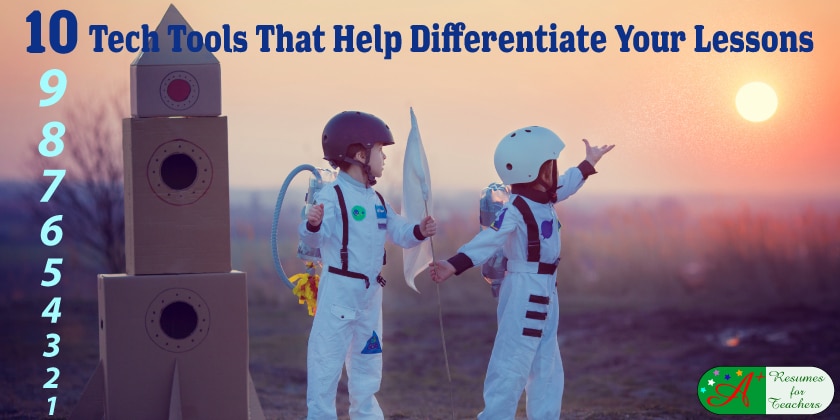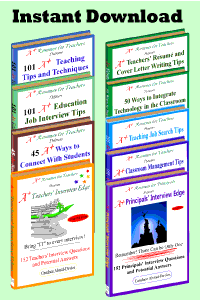Tech tools are proving to be very effective for engaging students and maximizing their learning potential. They are a great method for facilitating all learners’ types and levels and reaching out to students’ various interests. Technology is also excellent for communicating with parents, administering assessments, and monitoring student progress. Most importantly, technology proves to be a very effective way to help differentiate your lessons.
Integrating tech tools in your classroom can be beneficial for many reasons:
• Actively engages students and encourages a desire to learn;
• Enhances technological skills, which are crucial in today’s technology-driven society;
• Boosts written communication and research skills;
• Promotes both independent and collaborative learning, depending on the program or device;
• Differentiates instruction to facilitate various types of learners;
• Assists with lesson development, presentation, student assessment, and record-keeping.
Blended learning is modernizing classrooms rapidly, and it is difficult for teachers to keep up.
Before you integrate a new technology, ensure you understand how to use it, teach students with it, and maximize the learning potential.
If you wish to provide students with a top-notch education, consider integrating technology on a greater basis and vary the programs you use. So many different options are available to you that are educational, interesting, and help students actively learn. The possibilities are almost limitless. I’ve assembled ten of my favorite educational tech tools that help enhance a classroom.
Below are ten tech tools to help enhance and differentiate your lesson plans.
1. Document cameras
A document camera is a real-time image capture device that displays images to a large audience. It is like an updated version of an overhead projector. Teachers can use document cameras to take pictures and refer to them during lesson plans. They are a great way to complement lectures and engage visual learners.
2. Smart Board
A Smart Board is an interactive whiteboard that uses touch. This technology encourages active student engagement and hands-on participation. It is an effective way to accommodate multiple intelligences and promote cooperative and collaborative learning.
3. TED Talks
TED stands for Technology, Entertainment, and Design. The website hosts conferences and discussions that take place all over the world. TED Talks covers various topics, reinforces critical thinking skills, and promotes creativity and collaboration. Topics showcased by TED Talks can be applied to school, work, and home.
4. WebQuests
WebQuests are an inquiry-based activity that can be utilized for every grade and core subject. A WebQuest comprises six key parts: introduction, task, process, resources, evaluation, and conclusion. Teachers can actively engage students, introduce new material, and assess student learning. They are also quite easy to develop and can be adapted to suit a changing student population.
5. WordPress
WordPress is an online program used to build free websites and blogs. Teachers can use it to create a class website, maintain communication with parents and students, and enhance students’ technological and writing skills. Educators can also control access to the content and keep students’ writing private.
6. Skype
Skype is a great tool for hosting guest speakers worldwide, staying in touch with pen pals, and communicating with other teachers and classrooms. It took weeks to months to send and receive letters in the pen pal program; however, Skype (and email) allows instant student communication. This is also an effective method for students to learn about other cultures, cultivate compassion, and become engaged globally.
7. Edutopia.com
Edutopia is a fantastic website that discusses almost any educational topic you can think of, including technology in the classroom, classroom management, brain-based learning, curriculum planning, student engagement, and teaching strategies, to name just a few. This website allows teachers to post articles, read about different issues and ideas, and converse. In addition to written posts, Edutopia hosts various videos. This website should be your number-one go-to for classroom ideas! One fantastic post is titled 100+ Tools for Differentiating Instruction Through Social Media.
8. iPads
iPads can use by individual students in groups or as a whole class. Various apps can be added to make videos, read and write, conduct projects and experiments, etc. If your classroom or school’s technological budget is tight, consider writing a grant proposal for new iPads or other devices.
9. PowerPoint
PowerPoint may not be the newest form of technology, but it’s a tried and true method for presenting information. PowerPoint presentations are easy to create and can be as simple or complex as possible. Your slideshow can include text, pictures, video, and sound clips, thus appealing to diverse learners. The software can also develop exciting games such as Jeopardy or Who Wants to Be a Millionaire? Students can also make their own PowerPoint presentations to share with the class.
10. Podcasts
Like TED Talks, podcasts can be recorded and listened to anywhere. You can find podcasts on almost any topic students will enjoy and find applicable. This is a great way to complement lesson plans and facilitate students with auditory learning styles.
Aside from the tech tools above, there are websites and tools to motivate reading practice for students.
Incorporating technology tools into your resume will increase your credibility. Staying current is paramount to successful classroom teaching.
Technology should not take over your classroom; instead, it should supplement some activities and complement and reinforce the information you present to students.
Many of the above tools are either free or relatively inexpensive. Consider applying for grants and/or organizing school-wide fundraisers to buy or update your classroom technology, especially the more expensive hardware. It is well worth it because you will get years’ use out of these helpful tech tools, like Smart Boards and iPads.
Regardless of the technology you choose, discuss online safety with students. Many predators out there are looking to contact children and/or steal sensitive information. Ensure students know not to provide their date of birth, phone number, home address, photos of themselves, or any other identifying information to individuals they do not know. However, this is good information for everyone to keep in mind.
Technology has numerous uses and benefits that can help enhance your classroom and improve the learning experience. Using various products, software, and websites, you can reach out to your students in a way never before.
Integrating technology is necessary to strengthen connections with students, reach learners of all styles and levels, and produce an interactive and engaging classroom.
However, remember that technology is not solely for students; it can be an excellent tool for you as an educator. It can make your life much more straightforward, help you discover new ideas, and help you communicate with others on a more practical level. So now is the time to get excited about integrating tech tools into your classroom and rev up your students’ learning!
If you would like help with your education career direction, academic resume, goals, or job search, contact me by email / candoco@telus.net or call 1 877 738 8052.
You can also view our services here.
I’d be happy to help! Learn more about Candace.


